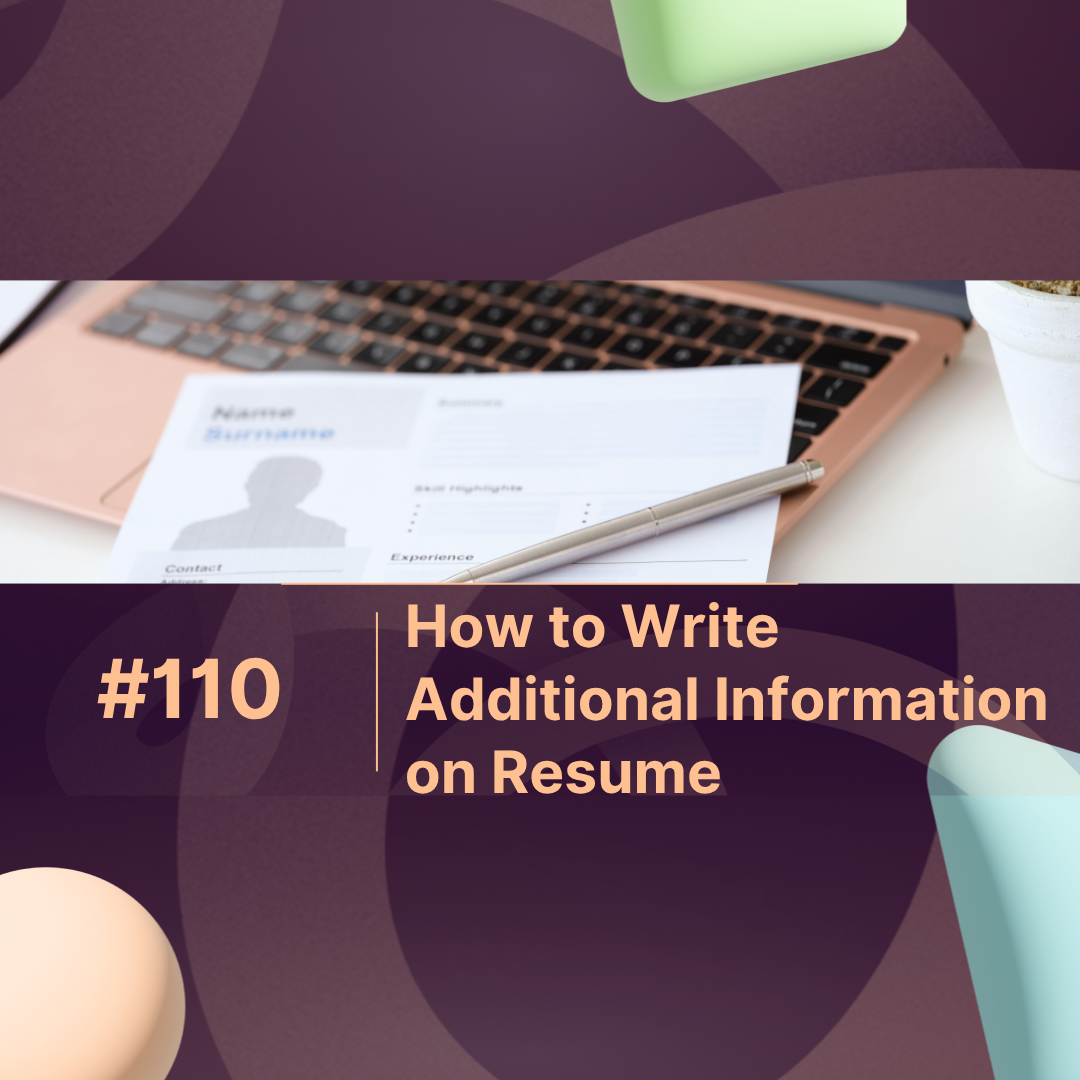Overview
The additional information on resume section is your secret weapon to stand out from other applicants. While most resumes focus on work experience and education, this often-overlooked part can showcase achievements, certifications, or unique skills that don’t fit neatly elsewhere. If used correctly, it can elevate your personal brand and help you make a lasting impression.
In this guide, you’ll learn what to include, what to avoid, and how to write additional information that actually boosts your chances of landing an interview.
What Is “Additional Information” on a Resume?
Additional information on resume refers to the extra details that strengthen your profile but aren’t covered in your main sections like “Work Experience” or “Education.”
This could include:
-
Certifications, awards, or licenses
-
Volunteer work or community service
-
Professional affiliations or memberships
-
Language proficiency
-
Relevant hobbies, interests, or side projects
These details help employers see your complete story—not just your job titles.
Why Additional Information Matters
According to a 2024 LinkedIn survey, 73% of hiring managers say candidates who include relevant extracurricular achievements or certifications appear more well-rounded and motivated.
Adding this section can:
✅ Demonstrate transferable skills
✅ Showcase cultural fit
✅ Highlight continuous learning
✅ Reinforce your soft skills (e.g., teamwork, leadership)
| Resume Element | Importance (1–5) | Recruiter Focus (%) |
|---|---|---|
| Work Experience | 5 | 94% |
| Skills Section | 4 | 88% |
| Education | 3 | 72% |
| Additional Information | 4 | 76% |
Source: 2024 JobMarket Report by ResumeLab
How to Write the Additional Information Section
Here’s a step-by-step breakdown of how to write this section professionally and effectively:
1. Choose the Right Placement
Place the section at the end of your resume—below skills or education. Label it as “Additional Information” or “Other Details.”
2. Keep It Relevant
Only include information that strengthens your candidacy for the role. For example, if you’re applying for a marketing position, mention your certification in Google Analytics—not your love for rock climbing.
3. Use Bullets for Clarity
Recruiters spend an average of 6–8 seconds scanning a resume. Use bullet points instead of paragraphs to keep your section readable.
Example:
Additional Information:
-
Certified in Project Management (PMI, 2024)
-
Volunteer, Local Business Mentorship Program
-
Fluent in English and Spanish
-
Member, Digital Marketing Association
4. Quantify When Possible
Numbers add credibility. For example:
“Volunteered 120+ hours annually to mentor startups.”
5. Tailor to Each Job Application
Customize this section based on what the employer values. Review the job posting or company website to identify desirable traits.
Tools like MaxProfile make this process easy by comparing your resume against job descriptions and recommending which additional information sections to emphasize for better matching.
What to Include in the Additional Information Section
Here’s a simple guide to help you choose:
| Category | Example | Why It Helps |
|---|---|---|
| Certifications | Google Analytics, PMP, CPR | Shows credibility and up-to-date skills |
| Awards | “Employee of the Year 2023” | Demonstrates recognition and performance |
| Languages | Fluent in French and English | Valuable for global or client-facing roles |
| Volunteer Work | Mentored youth in STEM | Highlights soft skills and leadership |
| Publications | Guest writer at Industry Blog | Adds authority and thought leadership |
| Interests | Photography, UX Design | Shows creativity and cultural fit |
Avoid adding generic hobbies like “watching movies” or “reading.” Focus on items that align with your career goals.
Example of an “Additional Information on Resume” Section
Additional Information:
-
Certified Scrum Master (Scrum Alliance, 2025)
-
Speaker at “HR Tech 2024” Conference
-
Published article on LinkedIn: “The Future of HR Automation”
-
Fluent in English, French, and Hindi
-
Volunteer at NGO – Teach for Skills
This section adds personality while reinforcing your professional credibility.
Common Mistakes to Avoid
Listing irrelevant hobbies (e.g., “Playing video games”)
Including outdated or expired certifications
Overloading with too many bullet points (limit to 4–6)
Using this section to repeat information already mentioned
Remember, less is more your additional information should complement your resume, not clutter it.
Conclusion
The additional information on resume section is where your individuality shines. It’s your opportunity to show what makes you a well-rounded professional beyond your job titles.
By strategically adding certifications, languages, and relevant interests, you can demonstrate authenticity, adaptability, and initiative qualities employers love. With smart editing tools like MaxProfile, you can tailor this section for each job to maximize visibility and impact.
So before hitting “Submit,” review your resume and ask: Does it tell my full story? If not, your “Additional Information” section might be the final touch it needs.
FAQs: Additional Information on Resume
1. What is the additional information section on a resume?
It’s a section that highlights relevant achievements, certifications, or personal interests that support your professional profile.
2. Should I include hobbies or personal interests?
Yes—but only if they relate to the job or demonstrate valuable traits such as leadership, creativity, or teamwork.
3. How long should the additional information section be?
Keep it short: 3–6 bullet points. Focus on quality over quantity.
4. Where should I place it on my resume?
Usually at the bottom, after education or skills, so it complements—not distracts from—your main experience.
5. What are examples of good additional information?
Certifications, language skills, awards, publications, and volunteer experience that align with your professional goals.



